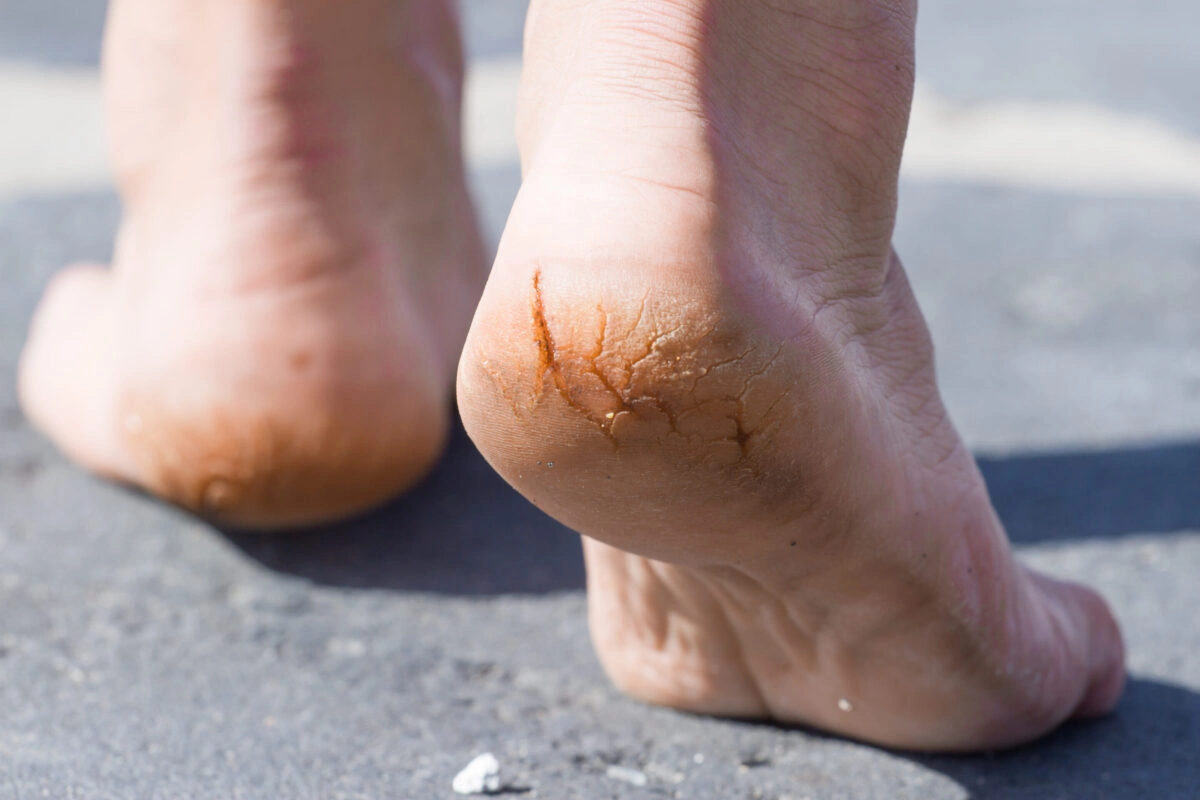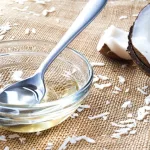:max_bytes(150000):strip_icc()/GettyImages-929255454-a590784f9a1b40dbafd08ff0be6d5a7a.jpg)
Dry, Cracked Skin? Yep, Been There
Okay, can we be real for a second? Is there anything more annoying than that moment you slip off your socks—and your feet look like they’ve trekked the Sahara? Or maybe you run your hand down your leg and, oof… dry patches. It’s like your skin’s been texting you “help!” and you… just missed the notifications.
We usually brush it off, right? Just grab a basic lotion, rub-rub, throw on some socks, and pretend feet cracks will fix themselves. I did this for way too long. Here’s the thing nobody tells you: most lotions barely scratch the surface. If you want the real good stuff—deep, actual healing—you’ve gotta go old school. Let’s talk about castrol oil for legs and feet cracks and why I’m slightly obsessed.
Why Do Feet Even Crack?
So… why us? Why do our poor heels, toes, and even shins betray us with those dry, angry splits? Well, turns out, it’s not just “dry air” or “bad luck”—though, yes, winter isn’t your friend here. It’s stuff like constant standing, pounding those pavement miles, sweaty shoes, and, huh, even just rockin’ open sandals too much (who knew?).
Getting older? Your skin naturally makes less oil. Runners? All that friction dries you out. Me? I once made it worse with super hot showers and harsh soap (rookie move). My friend Gina’s a teacher—turns out, being on your feet for hours = cracked heels city.
Let’s See the Main Culprits
| What’s Causing Cracks? | How to Dodge |
|---|---|
| Standing too long | Take breaks, wiggle those toes, and change shoes often |
| Open-back sandals | Switch to closed shoes in winter (even if it ruins your outfit) |
| Harsh soaps & hot showers | Go for gentle washes, lukewarm water |
| Poor diet | Add healthy fats (think: nuts, avocados), omega-3s, water |
It sneaks up, right? Your skin slowly gets rougher and rougher. Then—bam!—actual cracks appear. Which, can we just say, hurts like heck. I learned the hard way: ignoring those early signs didn’t make them go away…it made them more dramatic.
So, What Makes Castrol Oil a Secret Weapon?
Now, imagine a thick, golden oil that’s actually been a fixer-upper for generations. Castrol oil for legs and feet cracks isn’t some fancy influencer trend. It’s been in medicine cabinets way before we had tiny TikTok hacks. But why is it so darn good?
This oil is loaded—seriously, loaded—with fatty acids (like ricinoleic acid) and vitamin E. If you ask experts who track castor oil uses, it’s the penetrative stuff: it dives deep into dry, cracked skin, dragging that hydration with it. While lotions just sit on the surface, castrol oil gets in there, softens up the cracks, and tells the redness/inflammation to chill out.
More Than Just Soft Skin (Seriously)
What I love is that it’s not just about surface-level pretty. Castor oil has antifungal and anti-inflammatory powers too (bye, sneaky foot infections). I’ve even seen podiatrists recommend it alongside things like shea butter or coconut oil. Extra hydration? Always, yes, please according to foot specialists.
If you want extra on the deep-gut perks, I geeked out over the health benefits of rubbing castor oil on feet at night recently—like, surprise, it helps boost circulation and could even help you sleep better. Wild stuff, right?
Quick snapshot: How castor oil helps your foot game
- Hydrates: Deep moisture for cracks and dryness
- Builds a barrier: Locks in that goodness so skin heals overnight
- Soothes: Eases swelling, redness, even pain after long days
- Defends: Antimicrobial, so it helps with infections
- Feels legit: That spa massage-type slick? It’s real (trust me, your heels will thank you).
Real Talk: Does It Actually Work?
Let me give you the honest scoop. Last year, my aunt tried castrol oil for legs and feet cracks after nothing else helped. She’s an avid gardener, so her heels and shins were practically a desert. The catch? She started using the oil at night, socks on, no fuss otherwise. By the end of week one, her skin was soft, less itchy, with hardly any new cracks. She actually wore sandals out again. (But also, I was jealous and tried it myself, obvs.)
And it’s not just us. I’ve stumbled on more anecdotes than I can count—people with runner’s calluses, teachers on their feet all day, even folks with “genetically dry” skin rave about castor oil’s slow-and-steady repair. It’s like water for parched soil… only for your skin this time.
If you’re skeptical, totally get it. Try a patch test first. And hey, don’t just take my word for it—see stories, side effects, and tips over at Castor oil on feet overnight side effects.
How the Heck Do You Use It?
Okay, it’s not rocket science, promise. No spa day required. You just need a bottle of good-quality castor oil, mild soap, and a pair of clean cotton socks. Here’s exactly what I do for the full nighttime upgrade:
- Wash & Pat Dry: (Actually dry!)—no moisture sticking around, only the oil going in.
- Optional: Pumice any extra roughness (gently), but don’t overdo it. Your skin’s not a tile floor.
- Oil Up: Pour a teaspoon (maybe two if you’re feeling wild) into your palms. Warm it up, then massage into all those cracks—heels, soles, even shins if they’re feeling scaly.
- Sock It: Slide on cotton socks. That’s right, actual socks. Leave ’em on overnight (yeah, it feels weird the first time, but you’ll get over it for the results).
- Morning Victory Lap: Rinse off, marvel at your new baby-soft skin.
You can repeat three to four nights a week (or every single night if you’re feeling desperate). The trick is consistency. Not a one-night miracle… but, dang, it works.
A Little Anecdote Break
I once did this after a five-mile hike that left my calves absolutely dust. By morning? Skin was… well, not “magazine perfect”, but a thousand times less tight. I didn’t want to scratch my own legs off any more. Totally real improvement—totally simple.
One more thing! For those with extra sensitive skin, you might want to dilute the castrol oil with a little coconut oil—makes it easier to spread, and lets it soak in gently. (A friend with skin that flares up at everything swears by this.) Everyone’s skin is different; be gentle, patch test if you’re worried, or check Castor oil on feet overnight side effects for more peace of mind.
Pro Tips: What If Stuff Isn’t Healing?
Here’s the awkward bit. Sometimes, no matter what you slather on, those cracks just don’t budge—or worse, they crack, bleed, get redder, or even start to… smell. (Sorry, TMI!) If that’s you, just pause. Stubborn cracks mean you might have athlete’s foot, eczema, or need a doctor to check it out.
For most of us, though, basic foot and leg cracks are a combo of dryness, friction, and not enough TLC. So… it’s rarely something that can’t get better with a few tweaks.
What Else Helps? Don’t Forget Inside-Out Care
- Drink more water. (I know, you hear this everywhere. Still true.)
- Add omega-3s—try walnuts, flaxseed, salmon, or even a supplement.
- Make socks your BFF in dry months. It’s not glamorous, but it works.
- And—seriously—eat your veggies, not just bread and cheese.
A little bonus: I’ve got a buddy who started with castrol oil for legs and feet cracksand added a zinc supplement… she now has zero cracks year-round. Sometimes, fixing outside means tending to what you put inside.
If you want deep details on all the perks (like how it can help your foot muscles, even ease restless legs at night), I recommend checking out health benefits of rubbing castor oil on feet at night—it’s got all the good sciencey stuff in language that makes sense.
Keeping It Safe, Not Sorry
Now, I’m not your mom (or your doctor), so here’s my gentle nag: if you’ve never used castor oil before, do a small patch test. Allergies can happen. If you feel stinging, itching, or see any weird rash, stop. (Again, you can always read up on Castor oil on feet overnight side effects for more info.)
Oh, and psst—castor oil stains fabric. Don’t use your favorite socks (learned that lesson the hard way). Go for an old, soft pair. Trust.
What’s Your Move Now?
Here’s the part where I get all enthusiastic and nudge you to try. There’s nothing fancy about castrol oil for legs and feet cracks, but sometimes, the best fixes aren’t fancy, just consistent. Your skin works hard for you—standing all day, trudging through seasons, carrying you everywhere. A little nightly castor love is like saying “thanks” in the language your feet (and legs) understand.
So why not give it a shot tonight? Start with a simple rub, some socks, maybe even a leg massage if you’re feeling extra. You’ll wake up surprised at the difference one good habit can make. And hey—if you’re like me and love sharing the “aha!” moments, tell a friend or drop your story below. We’re all just walking this dry, cracked journey together… but here’s to softer, happier steps ahead.
What do you think? Ready to ditch the drugstore creams and go old school, or are you still on the fence? Either way, I’d love to hear: What’s your go-to for stubborn skin? Spill the secrets! And don’t forget, if cracks get worse, call up your doctor—they can spot stuff even the best oils can’t.


















Leave a Reply
You must be logged in to post a comment.